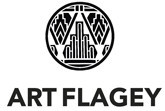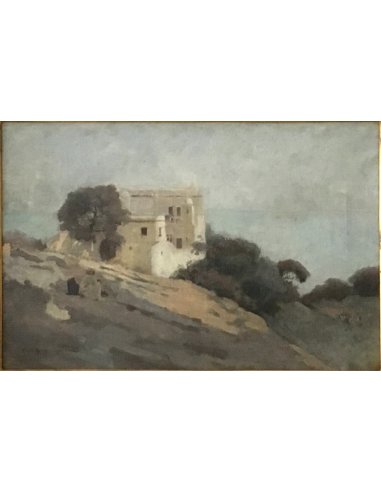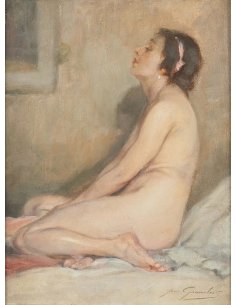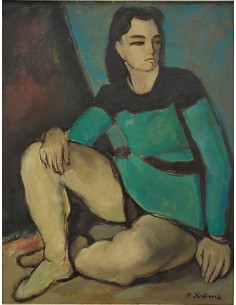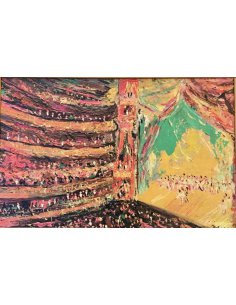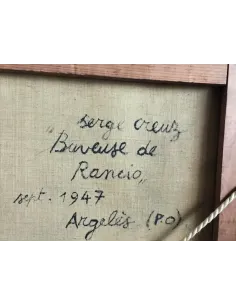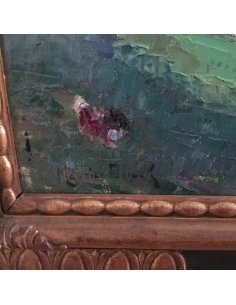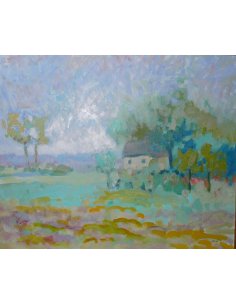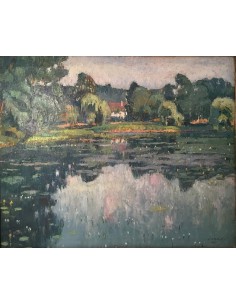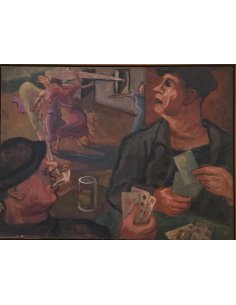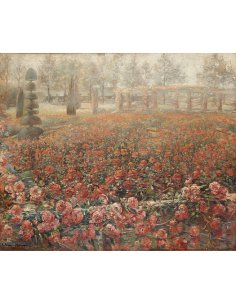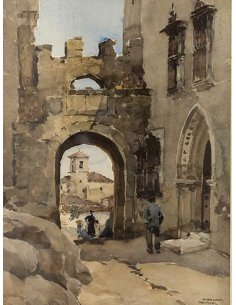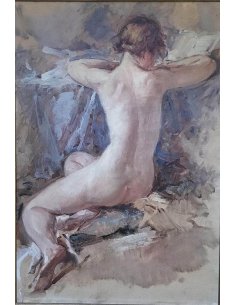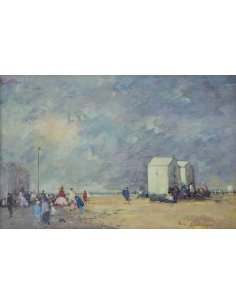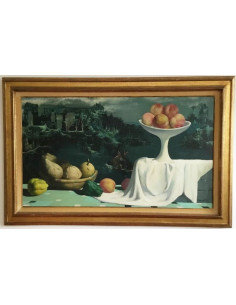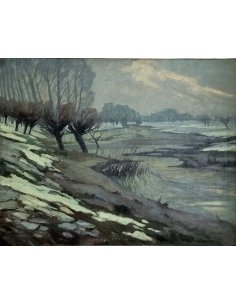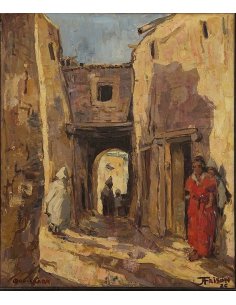Orientalist landscape painting by Pierre Billet - "Alger 1984"
Pierre Billet's atmospheric landscape painting depicts a remote house on the Algerian coast, surrounded by trees and shrubs. The diffused sky creates a hint of morning mist. Billet's color palette is restrained: gray-blue sky, natural earth tones, and muted green. The building's architecture appears simple and serene—a quiet, almost melancholic depiction of a colonial Algerian landscape.
In the foreground on the hill, a man in white Arabian burnous sits as a visual counterweight to the architecture. He lends the image a sense of depth. His light clothing subtly sets him apart from the earthy surroundings. He is not the focal point, but rather a silent witness to the landscape's atmosphere. His calm presence lends the image a narrative tension.
The figure not only visually balances the painting, but also emphasizes the cultural context of the scene: Algeria in 1884 and the work's oriental provenance. Figures in burnous establish Billet's connection to the oriental painting tradition of the late 19th century, similar to Guillaumet or Boulanger, who depicted comparable figures from Algeria.
Billet's painting fits harmoniously into his oeuvre of the 1880s. It is characteristic of orientalist works of the period and lends Billet's "Alger 1884" a special authentic depth.
ART FLAGEY, your Berlin art dealer for collectors, presents this original painting by Billet in its original frame.
About the artist: Pierre Célestin Billet (1836–1922)
Pierre Célestin Billet was a French painter and engraver. The son of an industrialist in northern France, he left the family business to study at the Académie de Paris under Émile and Jules Breton, whose naturalistic style he adopted.
Since his debut at the Paris Salon in 1868, Billet established himself with remarkable genre scenes of rural life and maritime everyday life; he received distinguished awards in 1873 (2nd class) and 1874 (3rd class). His early works – painted scenes of cooks, fishermen, and fieldwork – clearly demonstrated the realism of his teachers.
From around 1900, Billet's style opened up to Post-Impressionism – less academic, more generous, and more experimental in light, color application, and atmosphere. This transformation demonstrates Billet's constant artistic development toward greater expressiveness.
Billet was deeply involved in the French art scene: he taught, among others, his daughter Aline Guérin-Billet and artists such as Georges Maroniez and Maurice Lévis. He maintained close relationships with Jules Breton's circle, the École de Wissant artist group, and couples such as Demont-Breton and Duhem.
Several of Billet's works are now in prestigious collections: at the Musée de la Chartreuse (Douai), the Palais des Beaux-Arts (Lille), the Musée du Touquet-Paris-Plage, as well as in Glasgow and the Hermitage in St. Petersburg. He is also represented in Bordeaux and Paris.
